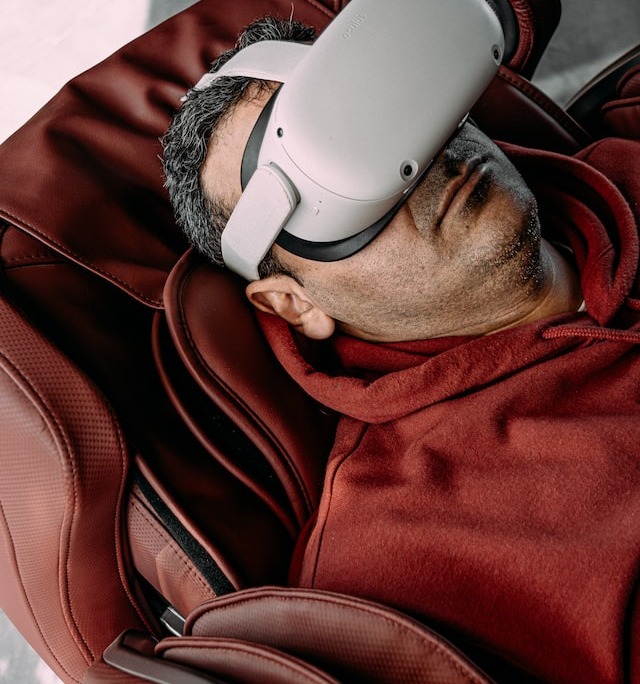Virtual Reality (VR) has been used to treat phobias for years, and with great success. It works by replicating a phobia-inducing environment in a safe and controlled setting. Through this virtual world, therapists can slowly introduce their patients to elements of the fear they are experiencing while giving them the opportunity to work through it more successfully than if they were actually in the situation. This process is known as ‘exposure therapy’ and has proven to be extremely effective in treating phobias such as arachnophobia, claustrophobia, acrophobia, agoraphobia and even social anxiety disorder. In this article, we’ll look at how virtual reality treats phobias, its success rates in treating various phobias, and tips on finding a qualified therapist to administer treatment.
What is Virtual Reality?
Virtual reality (VR) is created using computer technology. When you use VR goggles or a headset, you are actually seeing computer-generated images. These images are generated by a process called rendering.
Rendering creates the images by calculating the position of objects in a 3D space and then drawing them on a 2D screen. This process is repeated many times per second to create the illusion of movement.
A person using virtual reality equipment is typically able to “look around” the artificial world, move about in it, and interact with virtual features or items. The effect is commonly created by VR headsets consisting of a head-mounted display with one or two small high-resolution OLED or LCD monitors providing separate images for each eye, stereoscopic headphones delivering sound to each ear, and head motion tracking sensors. Some VR systems also include tactile information, generally known as haptic feedback.
Haptic feedback is the sense of touch that can be simulated in virtual reality. This can be used to create the sensation of being able to touch, feel, and manipulate virtual objects. Most VR systems use some form of haptic feedback, which can be as simple as rumble motors in-game controllers or as complex as full-body suits that provide a variety of sensations.
Introduction to Virtual Reality Treatments for Phobias

Virtual Reality (VR) therapy is a form of psychological treatment that has been used for decades to help patients confront and overcome their phobias. It’s based on the principles of ‘exposure therapy’, which works by gradually introducing an individual to elements of the fear they are experiencing in a safe and controlled environment. Through VR, therapists can create virtual environments that replicate real-world scenarios, allowing them to introduce their patients to fearful situations one step at a time. This gives them the opportunity to become more comfortable with their fears while still feeling secure and in control. The results have been so encouraging that many mental health professionals now consider VR therapies as part of the first line of treatment for a range of phobias.
In addition to providing a safe space for exposure therapy, VR also allows therapists to tailor treatment plans specifically to the individual. For example, they can adjust the difficulty of phobia-inducing scenarios or increase the intensity over time as their patient becomes more accustomed with each step. This type of personalized approach is essential when treating phobias and has been credited with helping many patients successfully overcome their fears.
VR treatments can also be used to practice coping strategies that may not be possible in the real world. For example, if a patient is afraid of flying, VR allows them to experience what takeoff and landing feels like without actually boarding a plane. In this way, they are able to learn helpful techniques for managing their fears while still in the safe confines of their virtual environment.
Finally, VR treatments can help patients identify triggers and uncover deep-seated issues related to their phobias that may have gone unnoticed before beginning therapy. By exploring these scenarios within the therapeutic setting of VR technology, patients can gain a greater understanding of the factors that are causing their fears and develop personal strategies for overcoming them.
Examples of Successful VR Treatments for Phobias
In recent years, VR treatments have been used to successfully treat a range of phobias such as arachnophobia (fear of spiders), aviophobia (fear of flying), acrophobia (fear of heights), and agoraphobia (fear of leaving home). In each case, the treatment is tailored to the individual based on their specific needs.
For instance, those with arachnophobia may be presented with progressively more challenging scenarios in which they must interact with virtual spiders. The length and intensity of exposure can then be adjusted accordingly until the patient feels comfortable enough to confront their fear in real life. Similarly, those suffering from aviophobia may be exposed to visuals and sounds associated with flying, such as the noise of an airplane engine and turbulence.
Similar treatments can be used to help those with acrophobia or agoraphobia by exposing them to increasingly challenging scenarios in a safe and controlled environment until they feel comfortable enough to confront their fears in real life. By giving patients the opportunity to learn how to cope with their phobias, VR treatments have been proven time and time again to be effective for overcoming them.
Tips on Finding a Qualified Therapist to Administer Treatment
When selecting a therapist to administer virtual reality treatment for phobias, it is important to ensure that they are qualified and experienced in the use of this technology. A good place to start is by asking the therapist about their qualifications and any credentials they may have related to administering VR treatments. Additionally, ask if they have experience treating specific fears or phobias with VR technology.
It is also important to select a professional who understands your individual needs and has an understanding of how VR can be used effectively in the treatment of phobias. Ask them questions about their approach, such as whether or not they will customize the treatment for you and if there are any additional therapies or techniques that might be included in your plan.
Finally, it is important to find a therapist who you feel comfortable with and trust. A good therapist should be able to establish a rapport with you and make sure that you are fully informed of the risks associated with VR therapy. With the right professional by your side, virtual reality treatment can help you gain control of your phobia and live life free from fear.
Understanding VR Therapy Risks & Benefits
Before undergoing any form of therapy, it is important to educate yourself on the potential risks and benefits associated with it. Virtual reality therapies for phobias typically involve exposing patients to progressively more challenging scenarios in order to confront their fears head-on. It is important to understand that this type of therapy can be stressful and uncomfortable at times, but that the goal is to help you confront your fears in a safe and controlled environment.
At the same time, it is important to note that VR therapies have been extensively studied and have demonstrated success in helping individuals overcome their phobias. The immersive experience of virtual reality has been proven to be extremely effective for desensitizing patients to their fear triggers, allowing them to slowly build up their confidence and courage until they are ready to face their fear in real life. With this type of therapy, many people are able to gain control over their phobia and eventually conquer it altogether.
It is important to remember that while VR treatments offer immense potential benefits, there may also be some risks associated with them. As such, it is important to discuss any potential concerns you have with your therapist beforehand and make sure that the treatment plan is tailored to meet your individual needs. With the right professional and a proper understanding of the risks and benefits, virtual reality treatments can be an effective way to tackle phobias head-on and reclaim your life.
Conclusion
In conclusion, VR technology is revolutionizing the way mental health professionals approach phobia treatment. Its effectiveness has been demonstrated in numerous studies across various types of phobia, showing that it can provide a safe and controlled environment for individuals to confront and eventually overcome their fears. With its ability to personalize treatments for individuals, VR is quickly becoming an invaluable tool in the fight against phobias.
By combining evidence-based psychological techniques with the immersive experience of virtual reality, mental health professionals can now provide patients with a powerful tool to help them triumph over their phobias. With continued research and development, VR promises to revolutionize the way phobias are treated and pave the way for better outcomes for those suffering from them.

